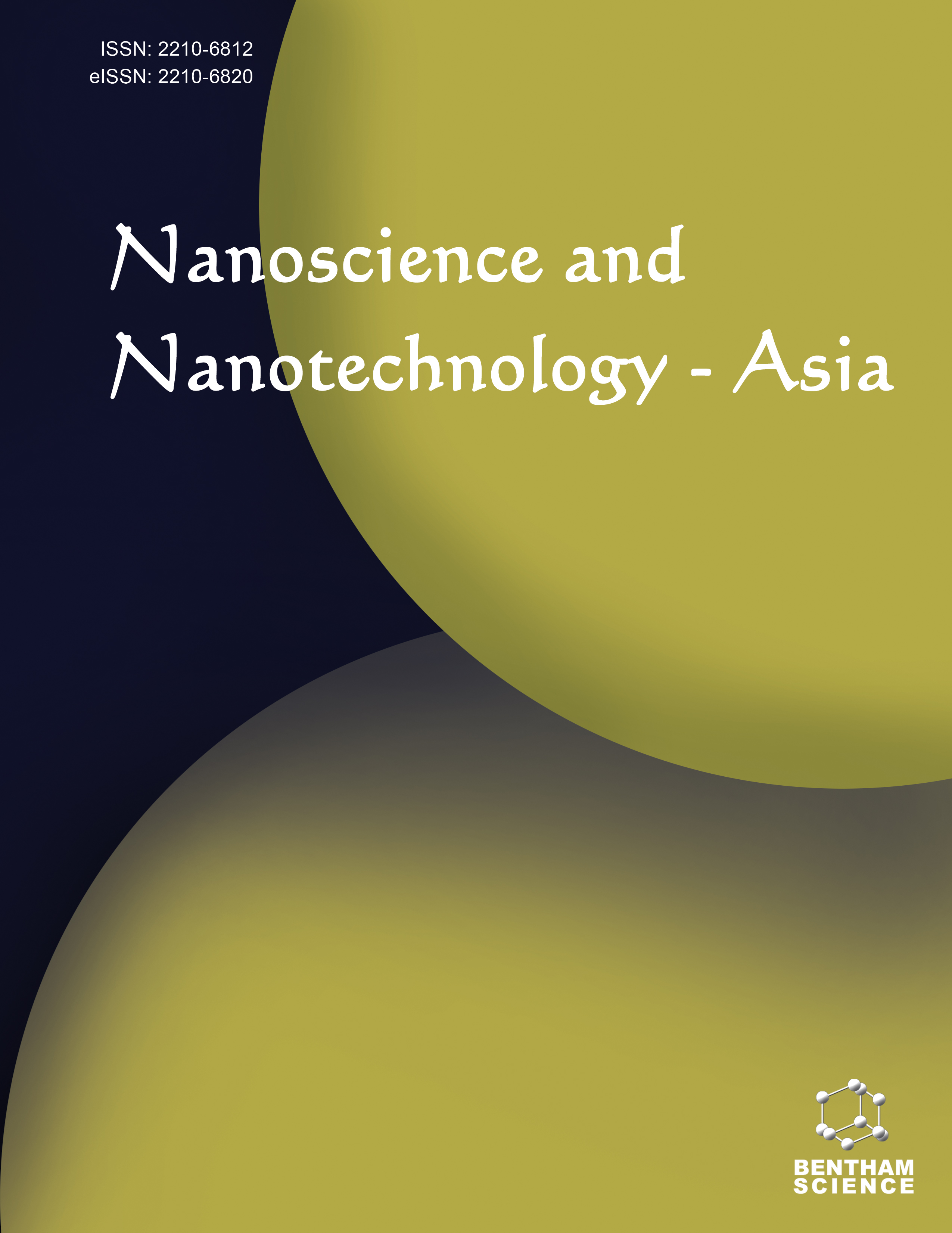- Home
- A-Z Publications
- Nanoscience & Nanotechnology-Asia
- Previous Issues
- Volume 14, Issue 2, 2024
Nanoscience & Nanotechnology-Asia - Volume 14, Issue 2, 2024
Volume 14, Issue 2, 2024
-
-
A Comprehensive Review on Synthesis of Silver Nano-particles: An Update
More LessAuthors: Aditya Sharma, Anju Goyal, Sapna Kumari, Madhukar Garg, Arpanpreet Kaur, Dinesh Mehta, Vibha Singh and Bhavya HansSilver and silver salts have been used since the beginning of civilization, but silver nanoparticles (Ag NPs) have just recently been discovered. They have been employed as antioxidants and antibacterial, antifungal, and potential anticáncer agents in agriculture and medicine. Many bacteria, including Bacilluscereus, Staphylococcus aureus, Citrobacter koseri, Salmonella typhii, Pseudomonas aeruginosa, Escherichia coli, Klebsi Read More
-
-
-
Carbon Dots an Integrative Nanostructure for Fluorescent Bio-imaging, Targeted Delivery of Medication and Phototherapy in Malignancy: A Review
More LessAuthors: Pallavi L. Salve, Somnath D. Bhinge and Mangesh A. BhutkarBackground: Silent onset and metastasis in tissues make cancer the most devastating illness globally. Monitoring the growth of the tumour and delivering drugs to specific tissues are some of the major issues associated with treatment. However, with an improved understanding of tumour microenvironments and advancements in nanocarriers of drugs, novel nano-targeting pathways that can be utilised by nanocarriers hav Read More
-
-
-
Metal Organic Frameworks: Synthesis, Characterization and Drug Delivery Applications
More LessAuthors: Prachi Mhettar, Rasika Patil, Dipti Patil, Jidnyasa Pantwalawalkar and Namdeo JadhavSince the last few years, metal organic frameworks (MOFs) have been attracting attention from scientific sororities. MOFs are novel porous materials with robust architectures that demonstrate a multitude of applications in theranostics. Interestingly, it shows adaptable porosity, versatile chemical configuration, tunable size and shape, tailorable surface functionalization, etc. MOFs have a very porous network space that m Read More
-
-
-
Investigation of Therapeutic Potential of Biosynthesized Silver and Gold Nanoparticles Using Extract of Wrightia tinctoria
More LessBackground: In Indian traditional medicine, the seeds and bark of Wrightia tinctoria are utilized as remedies for antidiarrheal and antidysenteric purposes, as well as for other medicinal uses. Aim: The primary aim of the study was to explore the green synthesis of silver and gold nanoparticles by employing an extract obtained from the Wrightia tinctoria plant and to explore their potential medicinal properties. Objective: This st Read More
-
-
-
Metal-based Nanoparticles in the Treatment of Infectious Diseases
More LessInfectious diseases caused by different pathogens are responsible for high mortality across the globe. Multi-drug resistance (MDR) of microorganisms towards different antibiotics has posed a great challenge in treating infectious diseases efficiently. The metal-based nanoparticles (MNPs) have demonstrated great promise in treating infectious diseases because of their inherent antimicrobial potential. Besides, thes Read More
-
-
-
Development and Characterization of Imatinib Mesylate Liposome: For In-vitro Anti-cancer Activity
More LessAuthors: Pravin Patil, Manju Choudhary, Poournima Sankpal, Sachinkumar Patil and Anand GadadIntroduction: According to our research, liposomes loaded with imatinib mesylate were formulated using a rotary evaporator and the thin film hydration method. FTIR, DSC, and XRD studies were carried out to ensure that the drug excipients in the final formulation were compatible. Method: The improved liposome batch (F7) was tested for particle size (353.9 nm), zeta potential (-46.0 mV), drug release (92.8%), and Read More
-
-
-
Formulation and Evaluation of Transdermal Niosomal Gel for Antihyperlipidemic Agent
More LessAuthors: Pravin Patil, Priyanka Bhagwat, Pournima Sankpal, Sachinkumar Patil and Shashikant DhawaleAims: The current study aims to create a formulation of Fluvastatin sodium (FVS) loaded niosome for the treatment of antihyperlipidemia using thin film hydration. The developed formulations were statistically optimized by two factors, three levels by 3-level factorial design and were evaluated for vesicle size, entrapment efficiency, zeta potential, transmission electron microscopy, and in-vitro drug release. Methods: The optimiz Read More
-
Volumes & issues
Most Read This Month
Article
content/journals/nanoasi
Journal
10
5
false
en


